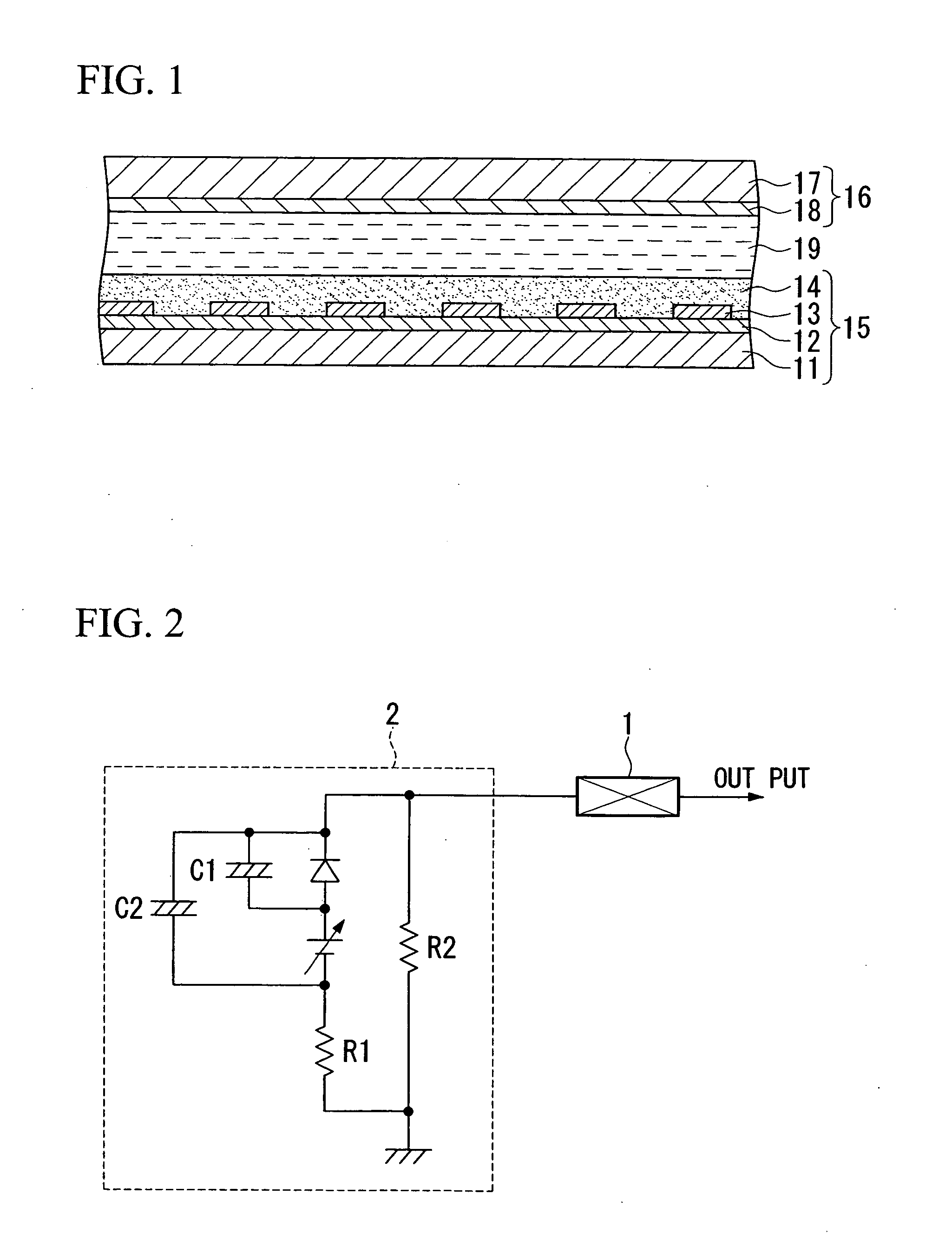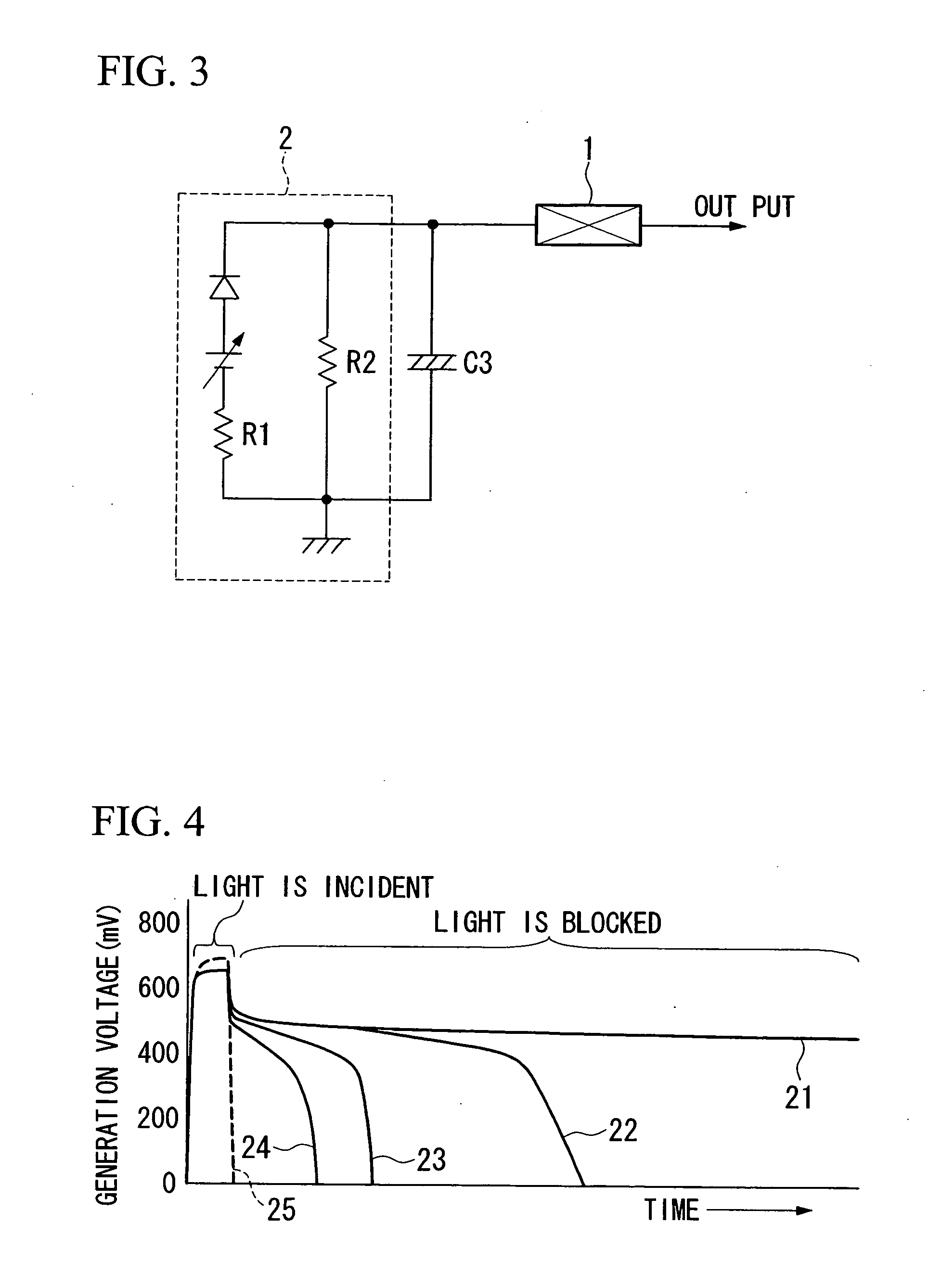Solar cell
a solar cell and cell technology, applied in the field of solar cells, can solve the problems of increasing the price of solar cells, increasing power loss, and no longer being able to supply stable electrical power, and achieve the effect of stable electrical power
- Summary
- Abstract
- Description
- Claims
- Application Information
AI Technical Summary
Benefits of technology
Problems solved by technology
Method used
Image
Examples
example 1
[0067] A transparent electrically conductive film made of FTO was formed on a transparent glass substrate with a size of ten centimeters square, and mesh-like current collecting wirings having 90% of an open area ratio were formed on the transparent electrically conductive film using a sintered-type silver paste. After a porous semiconductor film made of titanium oxide was formed as a protective layer of the wirings on the current collecting wirings, titania nanoparticle paste was coated on the porous semiconductor film and sintered. Then, the porous semiconductor film was dipped into a dye solution to sensitize the porous semiconductor film with the dye, and the porous semiconductor film was dried at room temperature to form a dye sensitized porous semiconductor film. The dye sensitized porous semiconductor film was used as a working electrode.
[0068] In addition, a counter electrode was made by forming a staked body having a conductive film which is formed by sputtering platinum o...
example 2
[0071] A cell was fabricated in a manner similar to that of Example 1, except that an iodine-based electrolyte was prepared by dissolving silver powders until they were saturated, and the current collecting wirings were not formed on the transparent electrically conductive film.
example 3
[0072] A cell was fabricated in a manner similar to that of Example 1, except that an iodine-based electrolyte was prepared by dissolving nickel powders until they were saturated, and the current collecting wirings were not formed on the transparent electrically conductive film.
PUM
 Login to View More
Login to View More Abstract
Description
Claims
Application Information
 Login to View More
Login to View More - R&D
- Intellectual Property
- Life Sciences
- Materials
- Tech Scout
- Unparalleled Data Quality
- Higher Quality Content
- 60% Fewer Hallucinations
Browse by: Latest US Patents, China's latest patents, Technical Efficacy Thesaurus, Application Domain, Technology Topic, Popular Technical Reports.
© 2025 PatSnap. All rights reserved.Legal|Privacy policy|Modern Slavery Act Transparency Statement|Sitemap|About US| Contact US: help@patsnap.com



